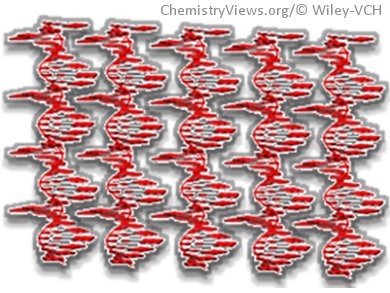Chiroptical organic and inorganic nanomaterials have great potential for applications in chiral memory, data storage, biological sensing, and optical communication. Modulation of their chiroptical properties can be achieved by inverting the structure of chiral structural units or by changing the 3D structure of a chiral supramolecular nanoassembly by means of external stimuli. Porphyrins and their derivatives are among the most-employed building blocks in organic nanoassemblies owing to their well-developed chemistry, stability, and modular structural and photophysical properties.
Milan Balaz and co-workers, University of Wyoming, Laramie, WY, USA, have shown that free-base and nickel porphyrin–diaminopurine conjugates are formed by hydrogen-bond-directed assembly on single-stranded oligothymidine templates of different lengths into helical multiporphyrin nanoassemblies. The nanoassemblies have highly modular structural and chiroptical properties. Large redshifts of the Soret band in the UV/Vis spectra confirmed strong electronic coupling among assembled porphyrin-diaminopurine units. Slow annealing rates yielded preferentially right-handed nanostructures, whereas fast annealing yielded left-handed nanostructures. The structure and handedness of all assemblies was preserved at temperatures up to +85 °C and at pH values between 3 and 12.
It is anticipated that these chiral DNA-templated porphyrin nanoassemblies will find applications in chiroptical nanomaterials owing to their modular chiroptical and structural properties and high stability.
- Supramolecular ssDNA Templated Porphyrin and Metalloporphyrin Nanoassemblies with Tunable Helicity,
Gevorg Sargsyan, Brian M. Leonard, Jan Kubelka, Milan Balaz,
Chem. Eur. J. 2014.
DOI: 10.1002/chem.201304153




![Synthesis of [c2]Daisy Chains via Mechanochemistry](https://www.chemistryviews.org/wp-content/uploads/2025/04/202504_RotaxanesWithSolidStateMechanochemistry-125x94.png)